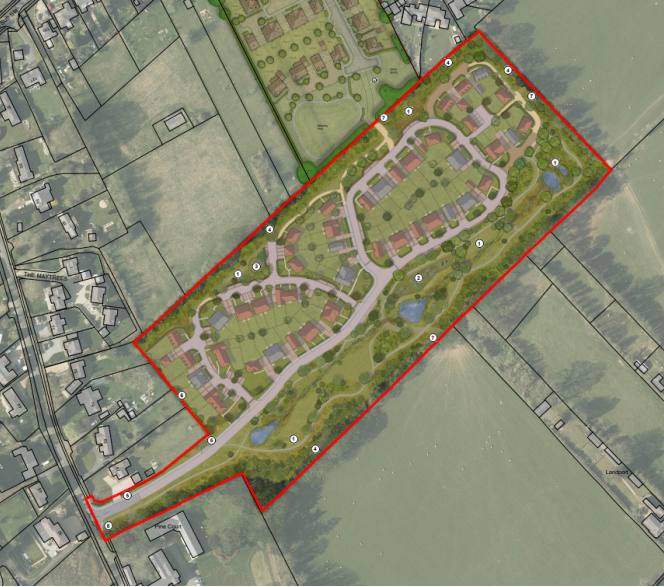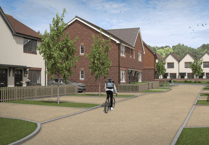Campaigners hoping to stop two large housing developments in Four Marks were left disappointed by last night’s meeting of East Hampshire District Council’s planning committee.
With East Hampshire unable to demonstrate a five-year housing land supply, the planning system’s ‘tilted balance’ in favour of development applied, and the council’s planning officers had recommended approval of both applications.
They were an outline application to build 65 houses on land behind 87 Lymington Bottom - approved by nine votes to nil, with one abstention - and a reserved matters application for 60 houses at Mount Royal, approved unanimously by ten votes to nil.
This was despite a marathon meeting that included public speakers against both applications - and the developers putting their case for both - which lasted for three hours and 23 minutes.
Highlighting that a similar application for the 87 Lymington Bottom site was turned down last year, Dr Arthur Barlow - chair of Fight4FourMarks - said: “We note that the officer’s report takes a whole 80 pages to convince us that the five solid reasons for refusal in 2024 can now be set aside. I have less than three minutes to convince you that these conditions still apply.”
Gaining outline permission - the main hurdle for a developer - was achieved on appeal for the Mount Royal site last year, and the reserved matters application was a matter of details.
But in his speech on that application Dr Barlow pointed out that how developments were created was as much of an issue as the final result.
He said: “Three sites - Belford House, 87 Lymington Bottom and this one - now approved lie within 55 yards of each other, so if they all go ahead and build at the same time the disruption will be off the scale on the busy route to school along Lymington Bottom. I hope the committee will take this into account by conditions to prevent simultaneous building on all three sites.”
Following the meeting, Dr Barlow said: “We have great support from concerned residents and will vigorously defend all the damaging housing sites proposed and applied for.
“The two applications approved this week will bring 125 houses on two sites opposite each other on Lymington Bottom, with up to 500 expected overall by the end of the year - or a 25 per cent increase in the size of the village.
“Local residents’ concerns have been largely ignored in the quest to build more houses. These sites will bring an increased risk of flooding in wet weather, more traffic queuing to join the A31, but no new services.
“The rural character of Lymington Bottom and the south of Four Marks will be decimated by all these very dense housing developments. We will cease to be a rural village.”
Meanwhile more than 200 residents have objected to an outline application for 100 houses on land west of Millfield in Alton Lane. The consultation period on that application - reference 50216/002 - ended on September 17 and no date has yet been set for it to go before the committee.
Calling it a “high-density suburban estate” on farmland outside the village settlement boundary, objectors said it was out of scale and would send another 125 vehicles per day through three “already hazardous” junctions on to the A31 while setting a precedent for “settlement creep” that could transform Four Marks from a rural village into a town.
The proposed density of 9.1 houses per acre - or 16.2 per an average-sized football pitch - would be more than eight times higher than the prevailing pattern in the village and greater than many outer London suburbs.
Warning that the application would “irreparably damage the character and safety of Four Marks”, villagers issued a statement.
They said: “Four Marks is valued for its countryside setting, its dark skies and its sense of community. This proposal would destroy that by forcing a high-density suburban estate on to village farmland.
“The harm far outweighs any supposed benefits. We urge East Hampshire District Council to refuse application 50216/002 in its entirety.”
Dr Barlow added: “Fight4FourMarks always points out the massive cumulative effect of these developments on our already-creaking infrastructure in our deputations at planning committee meetings.
“As ever it will be local residents suffering the disruption and loss of rural character, and our job is to bring awareness of that to the committee.”





Comments
This article has no comments yet. Be the first to leave a comment.